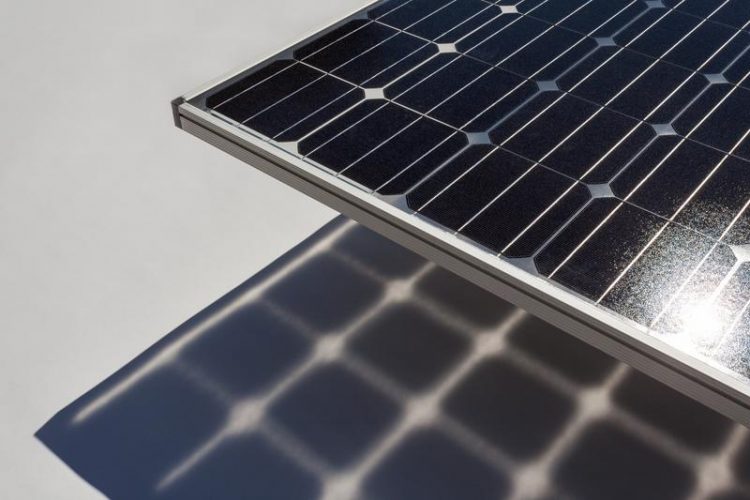International Intercomparison of PV Modules Reaffirms Measurement Precision of CalLab PV Modules

Bifacial PV module: The CalLab PV Modules of Fraunhofer ISE has the only test rig worldwide for calibrating this new type of module which collects sun both on the front and back side. Fraunhofer ISE
PV manufactures require high measurement precision to ensure the highest-level quality assurance in production and the power measurements of their products.
For the international comparison, two standard and two high-efficiency silicon PV modules were measured by each of the four participating international reference laboratories. In addition to the CalLab PV Modules of Fraunhofer ISE in Freiburg, Germany that initiated and coordinated the comparison, three other laboratories were involved: the European Solar Test Installation (ESTI) of the European Commission’s Joint Research Centre (Ispra, Italy), the Research Center for Photovoltaics of the National Institute of Advanced Industrial Science and Technology (AIST; Tsukuba, Japan) and the National Renewable Energy Laboratory (NREL; Golden, CO, USA). Calibration measurements of the short-circuit current, the open-circuit voltage, the power at maximum power point and the fill factor were compared.
At the end of the exercise, all modules were sent back to CalLab PV Modules where they were re-measured. For the crystalline PV modules, the measured values showed deviations within a range of ±0.9 percent, whereas for the high-efficiency modules the deviations lay within only ± 0.2 percent in part.
Even the maximum measured deviation of 0.9 % lay well below the value of the previous international comparison (2014: 1.3 percent). The JRC Ispra published the newest results in the October issue of “Solar Energy,” (http://www.sciencedirect.com/science/article/pii/S0038092X17306667) the official journal of the International Solar Energy Society®.
High Reliability on International Level
“This international Round-Robin provides comparative information about the calibration results of the four laboratories with respect to different PV technologies and measurement precision. We could demonstrate that the measurement methods for both crystalline silicon standard modules and high-efficiency modules are well established, thus providing the customer with a very high reliability,” says Frank Neuberger, Head of the Group CalLab PV Modules. “On the international level, CalLab PV Modules has proven its excellent standing among the most renowned calibration laboratories in the world.”
As accredited calibration laboratory, CalLab PV Modules of Fraunhofer ISE provides comprehensive calibration services for PV modules and reference cells. In addition, the laboratory supports PV power plant investors by offering customized testing procedures, assistance in selecting suppliers, quality assurance in purchasing as well as power monitoring during operation.
The customers profit from the high measurement precision of the calibration laboratory at Fraunhofer ISE. Also module manufacturers rely on precisely measured reference modules: for reducing measurement uncertainty in the production and for giving power ratings with low tolerance in their data sheets. To stay abreast with the newest developments in module technology, CalLab PV Modules has set up a worldwide unique test rig specially designed to calibrate bifacial PV modules.
CalLab PV Modules at the EUPVSEC
September 26, 2017 from 5pm – 6:30 pm
Visual Presentation: “IV Measurement of Bifacial Modules: Bifacial vs. Monofacial Illumination”
Poster Area 5BV.4.32
https://www.ise.fraunhofer.de/en/press-media/press-releases/2017/international-i…
Media Contact
All latest news from the category: Power and Electrical Engineering
This topic covers issues related to energy generation, conversion, transportation and consumption and how the industry is addressing the challenge of energy efficiency in general.
innovations-report provides in-depth and informative reports and articles on subjects ranging from wind energy, fuel cell technology, solar energy, geothermal energy, petroleum, gas, nuclear engineering, alternative energy and energy efficiency to fusion, hydrogen and superconductor technologies.
Newest articles

Zap Energy achieves 37-million-degree temperatures in a compact device
New publication reports record electron temperatures for a small-scale, sheared-flow-stabilized Z-pinch fusion device. In the nine decades since humans first produced fusion reactions, only a few fusion technologies have demonstrated…

Innovative microscopy demystifies metabolism of Alzheimer’s
Researchers at UC San Diego have deployed state-of-the art imaging techniques to discover the metabolism driving Alzheimer’s disease; results suggest new treatment strategies. Alzheimer’s disease causes significant problems with memory,…

A cause of immunodeficiency identified
After stroke and heart attack: Every year, between 250,000 and 300,000 people in Germany suffer from a stroke or heart attack. These patients suffer immune disturbances and are very frequently…





















